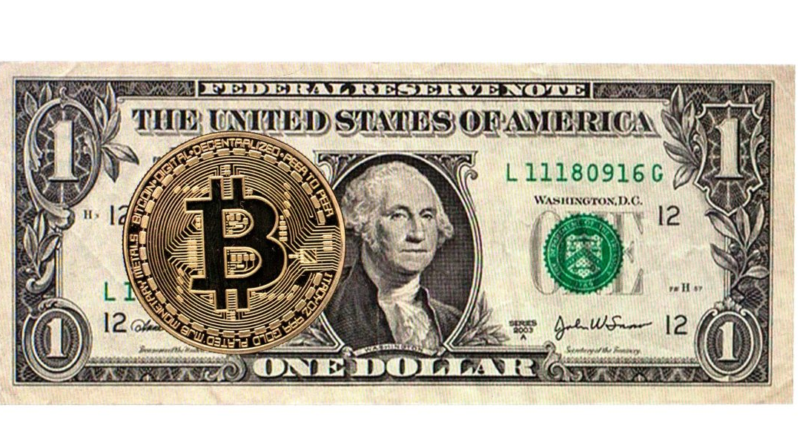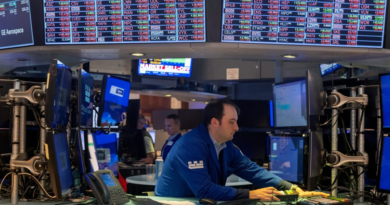Don’t call it a stablecoin: How did a ‘synthetic dollar’ generate a yield of 113%?
A cryptocurrency called USDe, from Ethena Labs, has become the fastest-growing dollar-denominated asset in crypto history. While it took the stablecoin titans Tether and Circle, which together demand 90% of the market, years to reach a $2 billion market cap, Ethena’s token needed just four months.
By tokenizing U.S. Treasuries, stablecoins generate yield for issuers, which are “some of the most profitable financial companies in the world,” Teddy Fusaro, president of Bitwise, told Fortune. As a result, competition is growing.
The reason for Ethena’s rapid rise is fairly simple: It generates a staggering annual yield (updated on a weekly basis) that’s deposited back to investors. Reaching highs of 113% in March, and 37% earlier this month, it’s since dropped to around 12% as markets cooled. By offering a stable place to store crypto, while generating returns, Fusaro noted, it should “at least in theory, be better” than other stablecoins, which don’t produce yield for customers.
USDe is the fastest growing USD denominated asset in the history of crypto pic.twitter.com/xgiRJjf96t
— G | Ethena (@leptokurtic_) April 8, 2024
How a dollar-pegged coin can offer a best-of-both-worlds approach is less straightforward. “If not free money, it’s at least an interesting risk-adjusted opportunity,” Foobar, founder of Clusters and Delegate Labs, told Fortune.
But its ascent is leading some in the industry to raise alarm bells about whether it should be considered a stablecoin at all. Or worse, some fear it could unravel as did Terraform Labs—in 2022, its stablecoins UST and Luna were wiped out in a matter of days when investors tried to withdraw funds.
Ethena says its aim is to provide a “similar tool” for the market, but with “risks that are as uncorrelated as possible” to those inherent in existing fiat-backed stablecoin offerings, such as when Silicon Valley Bank went under and USDC de-pegged by over 13%, Ethena said in a statement.
Admittedly, Ethena has adopted the phrase “synthetic dollar” to highlight that USDe “works differently than traditional stablecoins in the market and should be conceptualized as such,” the company added in its statement. But some are concerned that investors, eyeing the steady $1 value, may not fully appreciate the difference.
“I don’t agree with it being a stablecoin—it’s a trading strategy, right? The thing about stablecoins is that they should be stable,” Burnt Banksy, the founder of L1 Burnt, famed for setting a Banksy alight and making an NFT with the footage, told Fortune. “I love what Ethena is doing. I think it’s smart. I think it’s brilliant. But I think it’s misleading to call it a stablecoin, especially as new people are coming in and want a stable place to put their money.”
Cash-and-carry 2.0
Unlike traditional stablecoins backed by reserves of cash, corporate bonds, precious metals, or other cash equivalents, USDe represents a tokenized cash-and-carry trade, otherwise known as the basis trade, an old-school arbitrage maneuver popular with hedge funds.
A cash-and-carry trade derives profits from exploiting price discrepancies between an underlying asset and its corresponding derivative. The most basic approach would be to buy spot Bitcoin and sell Bitcoin futures, as the latter often trades at a slight premium owing to the time value of money.
“Ethena has just put this trade into a protocol, tokenized it, and then issued units of it,” Bitwise’s Fusaro explained. So the coin is pretty much nothing like the algorithmic stablecoin Luna; in that case, Terraform was minting unbacked, or under-collateralized, assets.
To mint USDe, users deposit Bitcoin, Ether, Staked Ether (stETH), or USDT into the protocol. These tokens are used to short perpetual futures (contracts that don’t expire) on centralized exchanges. Binance, Bybit, and OKX provide 94% of its collateral.
Typically, as the expiration date of a futures contract approaches, price differences narrow. This mechanism is absent in the case of perpetuals—funding rates are used so the future price tracks the spot. When the futures price is higher than the spot, funding rates will be positive (longs cover shorts); when it flips, then funding rates are negative (shorts cover longs).
“During bull markets, people don’t really care about how much they’re paying—they just want to get long and are willing to pay a high interest rate to do so,” added Fusaro.
This generates the yield. The trade is designed to be “delta-neutral,” meaning if the price of the underlying asset declines, it should be balanced out by its futures position, compensating for losses. If the collateral increases in value, it is balanced out by the falling value of the short. If the trade continues to work, USDe stays at $1 and investors pocket the yield.
According to a blog post by Arthur Hayes, the inventor of perpetuals and a backer of Ethena, which the company cites as its genesis story, the idea is to “synthetically create a USD equivalent, without ever touching USD held in the fiat banking system or a stablecoin,” by leveraging perpetual swaps.
‘How does this thing unwind?’
The issue is that funding rates aren’t always positive. If short demand suddenly outstrips the demand for long, as can happen in a bear market, the funding rate goes negative, and Ethena’s short positions would be required to cover those long holdings. In this scenario, the price of USDe could drop below $1.
“What will happen if their yield starts to come down? Then the question is, how does this thing unwind? And then it starts to get really, really hairy,” said a DeFi researcher who isn’t allowed to speak publicly on the matter.
To help prevent this from occurring, Ethena has allocated $32.7 million to an insurance fund. However, a CryptoQuant report published this week reveals that such a backstop would have to grow significantly if the market cap of USDe continues skyward.
“In order for Ethena to withstand a bear market period, it would need to sustain a keep rate above 32%,” the report said. If the insurance fund dries up, it would bleed into the supply of USDe, resulting in a gradual de-peg. It also could put downward pressure on exchanges.
$USDe stress test:
Their reserve fund can handle prolonged negative funding rates like in 2022’s FTX/LUNA scenario as long as its market cap stays below $3B (currently $2.4B).
The protocol is robust if sufficient reserve funds relative to its market cap. pic.twitter.com/dQLZOqo2o5
— Ki Young Ju (@ki_young_ju) April 17, 2024
“Historically, we have simply not seen sustained periods of negative funding,” Ethena said in a statement. Stability should refer to the ability to redeem 1-to-1 for assets backing the token, which USDC and USDT are “generally able to do,” it said. While the intent is that each USDe is redeemable by users for a portion of the backing approximating $1, “there can’t be a 100% guarantee that it will be the case in all market conditions.”
If a single investor wants to liquidate 100 USDe for Bitcoin they deposited, this is how it would work: The protocol buys back the perpetual future from the centralized exchange to cover its short position. But as Ethena is contributing to over $2.3 billion of short interest on perpetuals across the centralized exchanges, if this happens on a vast scale—quickly—it could theoretically create upward price pressure. And, more existentially, Fusaro asks: What percentage of the derivatives market can USDe actually grow to become, and at what point does that size begin to exacerbate the funding risk?
“If it unwinds in an orderly way, it’s basically backed, and everyone will be made whole,” the DeFi source told Fortune. “But the situations where people want to redeem and unwind—they are never, never orderly.”



